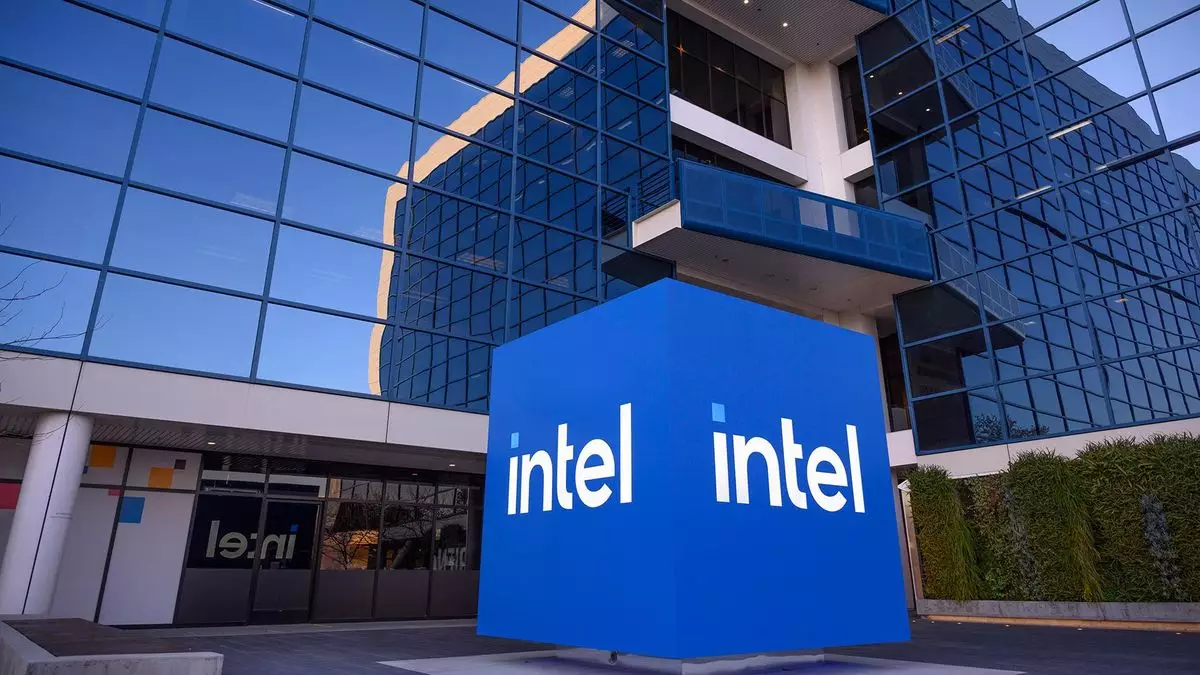Intel, once regarded as an unstoppable titan in the technology sector, finds itself at a crossroads fraught with missed opportunities and strategic blunders. A recent retrospective by the New York Times has brought to light an intriguing yet discouraging episode from Intel’s history: the company’s tepid response to a potential acquisition of Nvidia in the mid-2000s. The analysis not only accentuates the ramifications of that missed opportunity but also serves as a lens through which we can scrutinize Intel’s evolving corporate culture and strategy.
In 2005, Intel’s then-CEO Paul Otellini proposed the acquisition of Nvidia, a fledgling graphics company with a market value of approximately $20 billion. Representatives from Intel’s board were reportedly resistant to this move, viewing the price tag as excessive for a company that wasn’t fully recognized for its future potential. This resistance ultimately led Otellini to withdraw his proposal, which has since been labeled a “fateful moment.” Such reluctance highlights a significant strategic miscalculation; Nvidia now stands as a prominent leader in the artificial intelligence (AI) space, commanding a staggering market capitalization of around $3.5 trillion.
The importance of this acquisition extends beyond mere financials. The foresight required to comprehend Nvidia’s future relevance in the burgeoning AI sector was apparently lacking among Intel’s executive leadership. It was reported that several Intel executives had begun to understand the critical role Nvidia’s graphics technology could play in future data centers. However, the entrenched corporate culture at Intel proved to be a significant barrier to innovation, characterized as “the largest single-cell organism on the planet.” This highlight of insularity suggests that the company was not only slow to adapt but also incapable of tapping into emerging trends.
Intel’s historical focus has predominantly been on its x86 architecture, which was not just central to its business strategy but virtually defined it. Former CEO Craig Barrett’s metaphor of Intel as a creosote bush symbolized how the company viewed competition: thriving while simultaneously poisoning potential disruptors. Such an environment fostered complacency, leading Intel to miss critical opportunities to diversify its portfolio and embrace new technologies.
The consequences of this shortsightedness have manifested in various forms. After the failed Nvidia acquisition attempt, Gelsinger, who would later reclaim the CEO position, championed the Larrabee project, an ambitious endeavor to merge graphics and CPU designs. Unfortunately, Larrabee faltered due to lackluster graphics performance and developmental delays, marking another setback for Intel’s innovation aspirations.
Gelsinger’s reflections in a 2019 interview indicate a lingering frustration regarding Larrabee and its potential impact on Nvidia’s growth trajectory. He speculated that had Intel committed more vigorously to that market space, Nvidia would have been significantly smaller today. This mindset only underscores how crucial it is for tech giants to pursue aggressive strategies and risk-taking behavior when engaging with emerging technologies.
As it stands, Intel is grappling with a multifaceted crisis that extends far beyond acquiring Nvidia. Recent reports have indicated mass layoffs, canceled dividends, and continuing manufacturing troubles that have tarnished its once-untouchable reputation. The company is embroiled in a complex web of difficulties that suggest it has become reactive rather than proactive—a stark contrast to its former identity as an industry leader.
Moreover, Intel turned down a $1 billion opportunity to invest in OpenAI in 2018, a decision that now appears foolish given OpenAI’s current valuation, estimated around $80 billion. Had Intel entered into that investment, its returns would have multiplied significantly. This pattern of avoidance points toward a troubling trend of neglecting long-term strategies focused on innovation and technological evolution.
To navigate out of its current predicament, Intel must undergo a fundamental cultural shift. The leadership must embrace risk and prioritize innovation over merely relying on existing, successful products. It is essential for Intel to re-engage with emerging technologies and potential acquisitions that could rejuvenate its portfolio and enhance its strategic direction. The lessons from past mistakes should be evident: the technology landscape is dynamic, and companies must adapt or risk obsolescence.
Intel’s narrative serves as a cautionary tale of how the fear of risk can lead to missed opportunities in the fast-paced technology sector. While hindsight is intent on serving as a guide, it is the steps taken in the present that will ultimately determine if Intel can regain its stature in the industry. Only by adopting an ethos that champions innovation and embraces future possibilities can the company hope to write a new story, one that leads to revival rather than regret.

